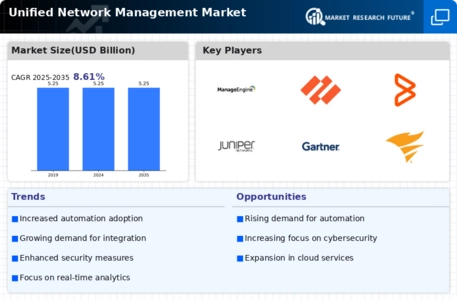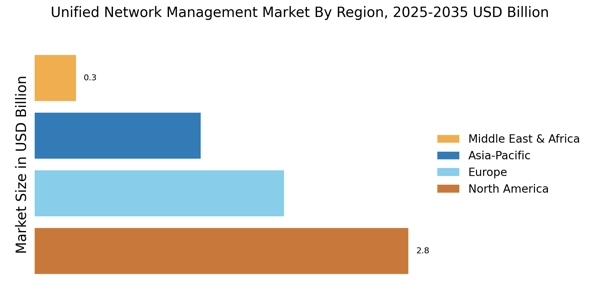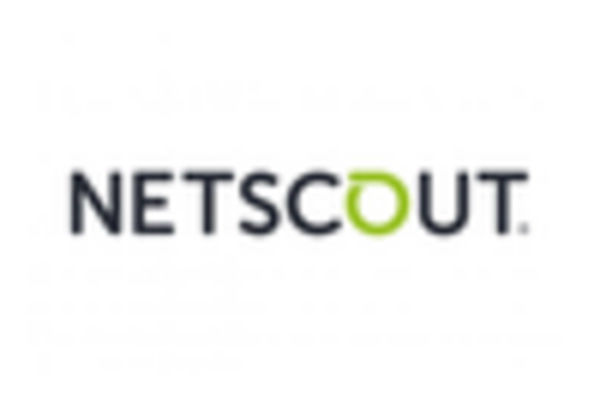Adoption of IoT Devices
The proliferation of Internet of Things (IoT) devices is significantly influencing the Unified Network Management Market. As more devices connect to networks, the complexity of managing these connections increases. This trend necessitates advanced management solutions capable of handling vast amounts of data and ensuring seamless connectivity. Recent statistics indicate that the number of connected IoT devices is expected to reach over 30 billion by 2025. Consequently, organizations are investing in unified management systems to monitor and control these devices effectively, thereby enhancing operational efficiency and security. This growing reliance on IoT is likely to drive further innovation within the Unified Network Management Market.
Regulatory Compliance Requirements
Regulatory compliance is becoming a critical driver for the Unified Network Management Market. Organizations are facing stringent regulations regarding data protection and network security, necessitating the implementation of effective management solutions. Compliance with standards such as GDPR and HIPAA requires robust monitoring and reporting capabilities, which unified management systems can provide. The market for compliance-related network management solutions is projected to grow, with estimates indicating a potential increase of around 8% annually. As businesses strive to meet these regulatory demands, the Unified Network Management Market is likely to see a surge in the adoption of compliance-focused management tools.
Increased Focus on Network Security
With the rise in cyber threats, there is an increased focus on network security within the Unified Network Management Market. Organizations are prioritizing the implementation of robust security measures to protect sensitive data and maintain operational integrity. The market for network security solutions is anticipated to grow significantly, with estimates suggesting a growth rate of around 10% annually. This trend is prompting businesses to adopt unified management systems that integrate security features, enabling real-time monitoring and threat detection. As security becomes a critical component of network management, the Unified Network Management Market is likely to evolve to meet these demands.
Shift Towards Cloud-Based Solutions
The shift towards cloud-based solutions is reshaping the landscape of the Unified Network Management Market. Organizations are increasingly migrating their operations to the cloud, seeking flexibility, scalability, and cost-effectiveness. This transition is driving the demand for unified management tools that can seamlessly integrate with cloud environments. Recent market analyses suggest that the cloud management segment is expected to witness a growth rate of approximately 15% over the next few years. As businesses embrace cloud technologies, the need for comprehensive management solutions that can oversee both on-premises and cloud-based resources becomes essential, thereby propelling the Unified Network Management Market.
Rising Demand for Network Efficiency
The increasing complexity of network infrastructures has led to a rising demand for enhanced efficiency within the Unified Network Management Market. Organizations are seeking solutions that can streamline operations, reduce latency, and optimize resource allocation. According to recent data, the market for network management solutions is projected to grow at a compound annual growth rate of approximately 12% over the next five years. This growth is driven by the need for businesses to maintain competitive advantages through improved network performance. As organizations expand their digital footprints, the necessity for effective management tools becomes paramount, thereby propelling the Unified Network Management Market forward.


















Leave a Comment